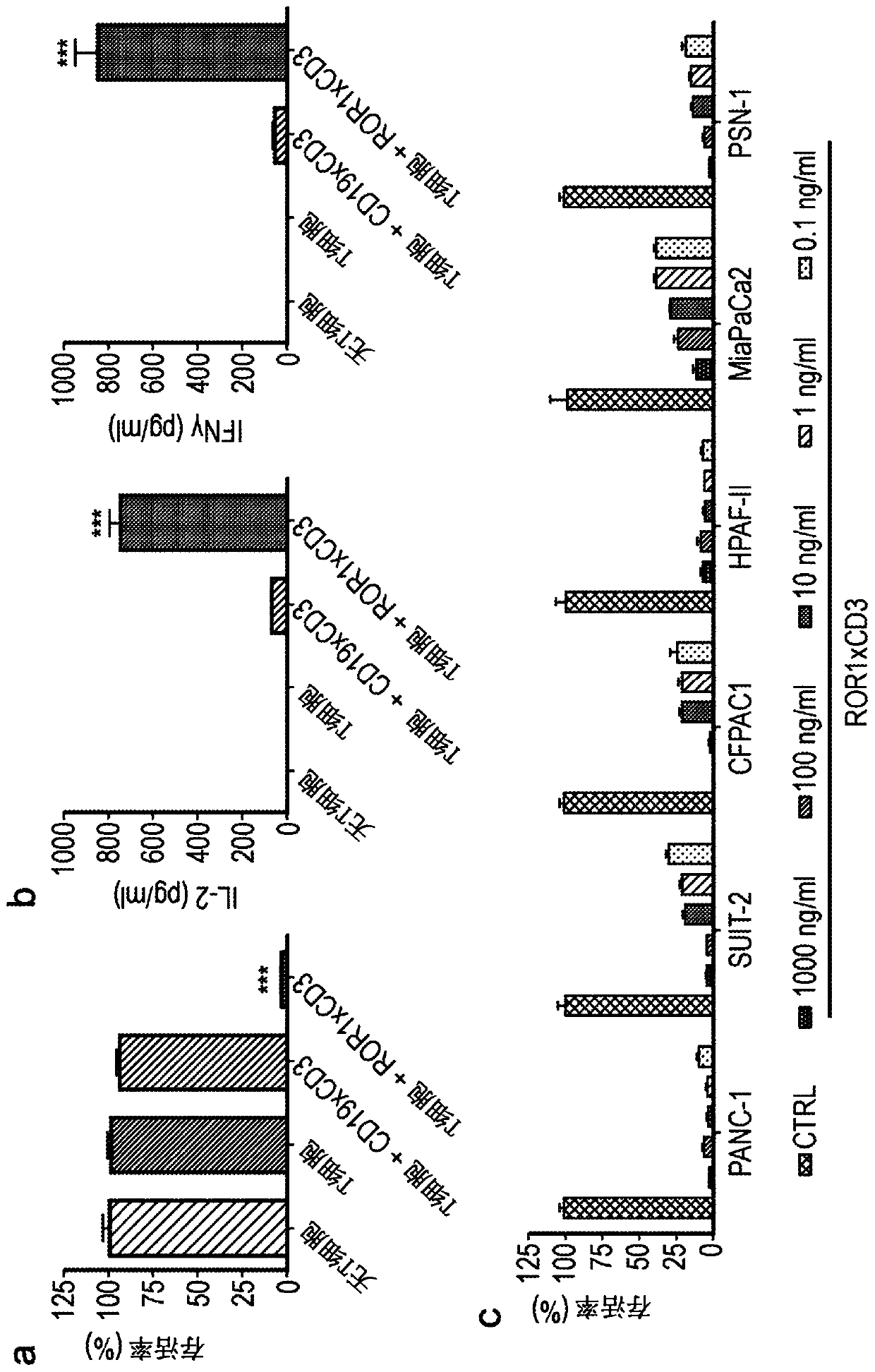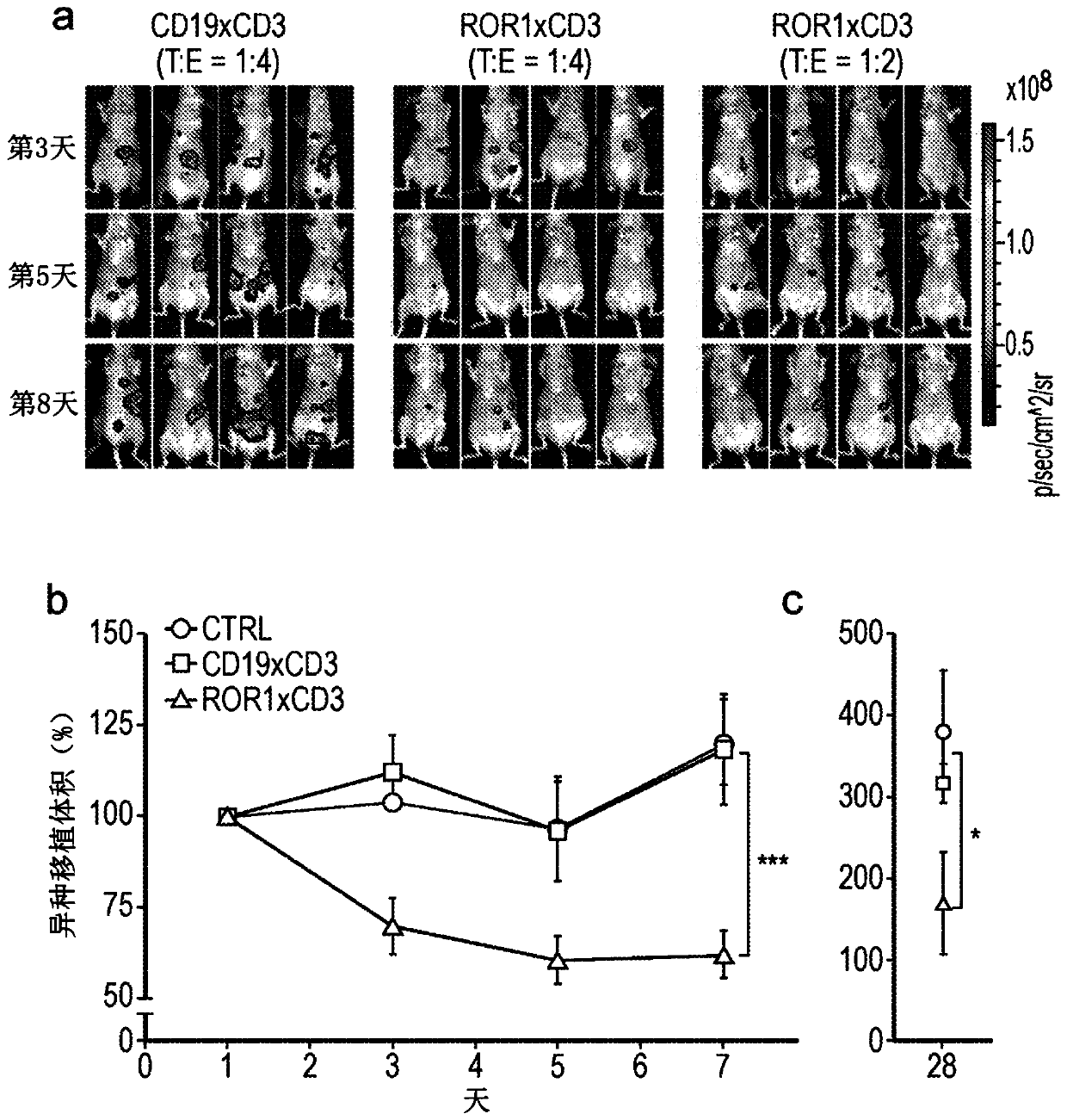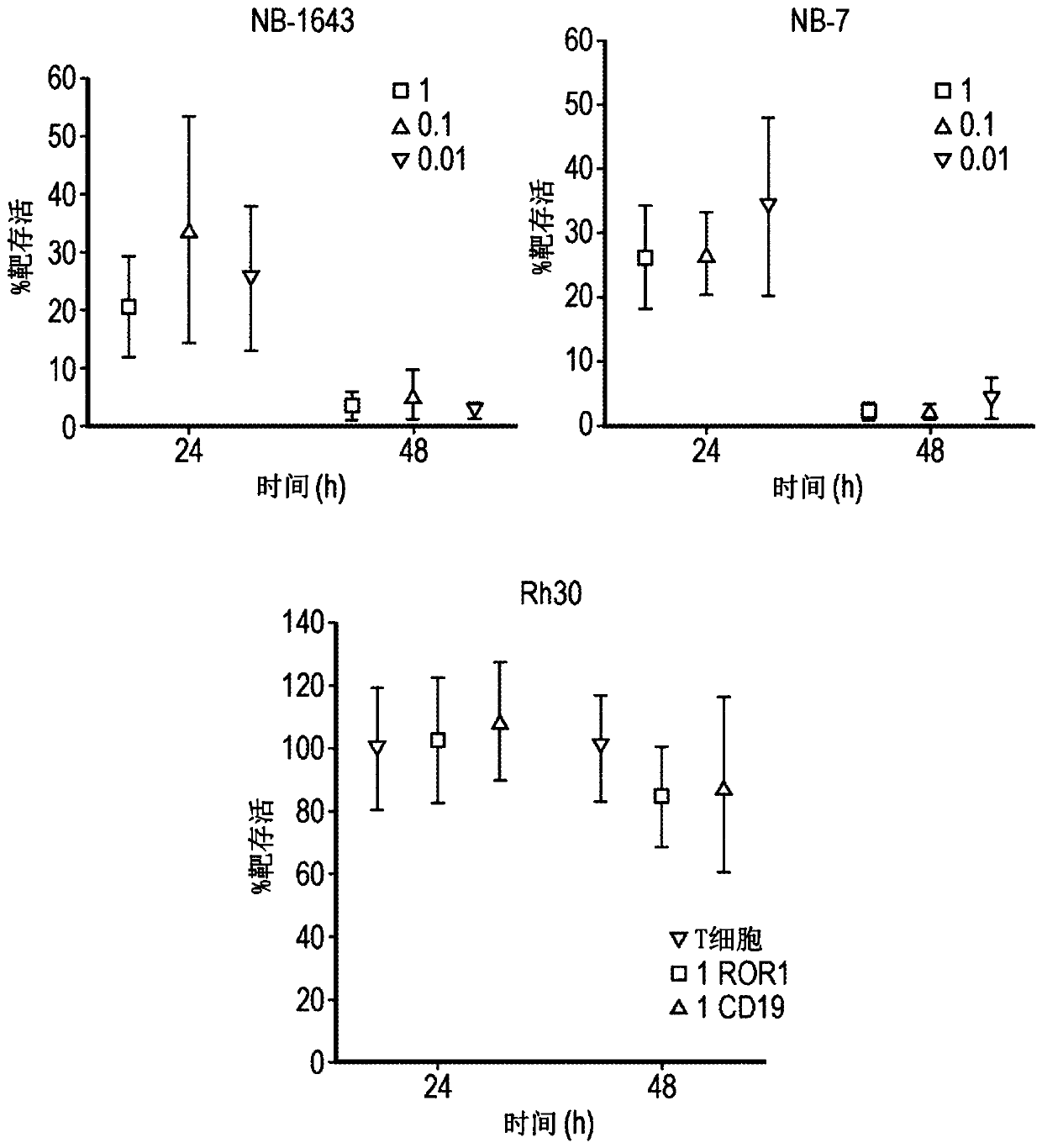Bispecific antibodies to ror1 and cd3
A technology of bispecific antibody and antibody molecule, applied in the field of bispecific antibody molecule and bispecific antibody, which can solve problems such as limited expression
- Summary
- Abstract
- Description
- Claims
- Application Information
AI Technical Summary
Problems solved by technology
Method used
Image
Examples
Embodiment
[0214] Materials and methods
[0215] ScFv generation
[0216] Rats were immunized with full-length ROR1 with Aldevron GmBH, oligoclonal clones from subsequent hybridomas were single-cell sorted, and variable sequences were isolated by 5' reverse amplification of cDNA ends using standard laboratory protocols. The production sequence was cloned into an antibody and assessed for specific binding to ROR1 before it was converted into a heavy chain-linker-light chain format single-chain variable fragment.
[0217] Cell Lines and Reagents
[0218] PANC-1, SKOV-3 and HEK293T cells were obtained from the American Type Culture Collection (ATCC; Teddington, Middlesex, UK). SUIT-2, CFPAC1, HPAF-II MiaPaCa-2, PSN-1 cell lines were developed by Professor Aldo Scarpa (Department of Pathology and Diagnostics, University and Hospital Trust of Verona, Verona, Italy) ,Italy)) kindly provided. HEK293T cells were cultured in Iscove's Modified Dulbecco medium (ThermoScientific, Paisley, UK) su...
Embodiment 2
[0246] epitope mapping
[0247] To assess the epitopes of the antibodies produced, we generated cell lines with truncated ROR1: these cell lines contained SUPT1 cells expressing full-length ROR1 (Ig, Frizzled and Kringle domains), immunoglobulin Protein domain only SupT1 , Coiled domain only SupT1 , Kringle only SupT1 , and combinations (Ig and Frizzled domain SupT1 and Frizzled and Kringle domain SupT1 ). This indicates that clone F binds to the coiled domain. This differs from prior art antibodies R12 and 4A5 that bind immunoglobulin domains. Thus, clone F exhibits different and unique binding properties compared to prior art antibodies R12 and 4A5.
[0248] To further characterize the epitope to which clone F specifically binds, we compared rat ROR1 to human ROR1 to assess amino acid differences between these two species. We made a number of mutated human ROR1 constructs that included single amino acid substitutions to putative amino acids that these antibodies could bin...
Embodiment 3
[0252] Due to sequence homology, clone F is unique to other antibodies produced (mouse and rabbit)
[0253] Human, murine, rabbit, and rat ROR1 protein sequences were aligned using Uniprot web-based software (http: / / www.uniprot.org / align / ) and differences between species were highlighted. Uniprot accession numbers: human (Q01973), mouse (Q9Z139) and rabbit (G1U5L1). For rat ROR1, the NCBI reference sequence NP_001102141.1 was used since the corresponding Uniprot sequence is only partially complete.
[0254] Clone F binds to Q261, probably due to a difference between the rat and human amino acids at this position (the human amino acid at position 261 is glutamine (Q), while the corresponding amino acid at this position in rats is histamine Acid (H)). When immunizing rats with human ROR1, this amino acid difference is considered immunogenic relative to the sequence of rat ROR1 against which the antibody was raised.
[0255] Known binders of antibody R12 (rabbit) and murine RO...
PUM
 Login to View More
Login to View More Abstract
Description
Claims
Application Information
 Login to View More
Login to View More - R&D
- Intellectual Property
- Life Sciences
- Materials
- Tech Scout
- Unparalleled Data Quality
- Higher Quality Content
- 60% Fewer Hallucinations
Browse by: Latest US Patents, China's latest patents, Technical Efficacy Thesaurus, Application Domain, Technology Topic, Popular Technical Reports.
© 2025 PatSnap. All rights reserved.Legal|Privacy policy|Modern Slavery Act Transparency Statement|Sitemap|About US| Contact US: help@patsnap.com



